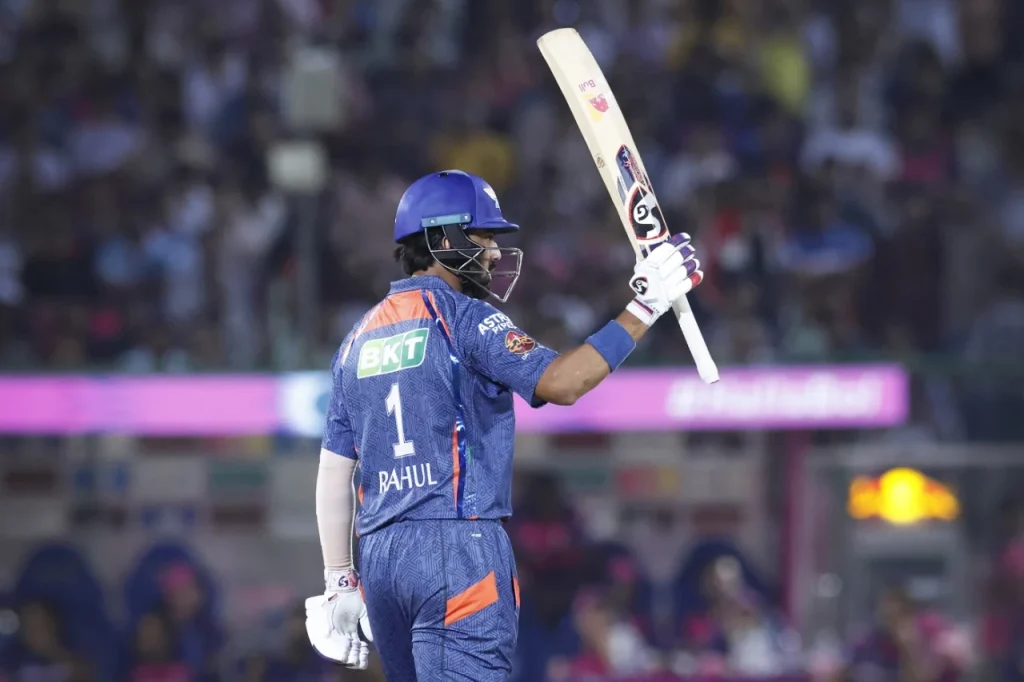
What is your first memory of KL Rahul’s batting? For some, it could be his first Test hundred in Australia at the SCG in January 2015. For a few others, it might be his twin centuries in a Duleep Trophy game from 2014. If you try to excavate more information on Rahul’s formative years, it could be his breezy 73 off just 96 deliveries in a Ranji Trophy game against Delhi in 2012. More than the runs he accumulated in those two domestic games, the point to observe was how Rahul dominated the proceedings with an array of shots.
It took a while for Rahul to showcase his wide range of shots in the T20 format, but in 2016, he touched a higher pedestal by striking at 146.49 in the IPL. A couple of years later, he even pipped the ‘Universe Boss’, Chris Gayle, while playing for Punjab Kings, finishing with an impressive strike-rate of just over 158. Who can forget his 50 off a mere 14 deliveries while taking on the Delhi Capitals’ bowlers?
Unfortunately, all those efforts are confined to the history books. In 2024, as Lucknow Super Giants brace themselves to take on RCB at the Chinnaswamy, his strike-rate has come under the scanner. Since his glorious run in 2018, Rahul’s strike-rate has never crossed the 140-mark in the IPL. Last year, he averaged 34.25 but his strike-rate was an abysmal 113.22. For a top-order bat, who is expected to clear the infield repeatedly in the Power Play, it was well below par.
So, what could be the main reason for Rahul’s plummeting numbers in the shortest format? Probably, he can’t find the right tempo in the middle overs? It is true that, occasionally, Rahul has found it rather difficult to manoeuvre the ball and cracking the big shots while facing the spinners in the period between 7 and 15 overs. But for someone who bats at the top of the order, his numbers aren’t shabby for that phase: If you combine the IPL 2022 and 2023 seasons, he averaged more than 100 versus spin and his strike-rate was 123.64. In the middle overs, he averaged 69.33 against spin, with his strike-rate improving to around 126.
Basically, his issues are twofold. First, he has a tendency to start slowly in the Power Play. Incidentally, he conceded a first-over maiden in back-to-back IPL matches last year. Rahul also doesn’t always strike the right balance between maintaining a good tempo and batting deep into an innings.
The way Rahul went about compiling his innings against Gujarat Titans in last year’s IPL serves as a case in point. On a two-paced deck, Rahul had found the right template as LSG looked to overhaul a target of 136. He was on 39 off 24 deliveries at the end of the eighth over. Rahul then inexplicably slowed down and his final score was 68 off 61 balls. No wonder, LSG hurtled to a gut-wrenching loss.
Even this year, Rahul once more lost touch with the required run-rate in the game versus Rajasthan Royals. To summarise the above descriptions, Rahul’s problems are related more to the mental side of things rather than something to do with his game. Probably, as the captain of LSG, he feels the pressure of steering the side past the finishing line.
Rahul hasn’t played a T20I since the 10-wicket loss to England in the 2022 World Cup. By now, there is enough competition for top-order spots. He has also been grappling with soft-tissue injuries. Rahul could still make it to the Indian side as a wicketkeeper-bat by playing in the middle order. Having said that, he has continued to open for LSG. At this point of time, his T20 career is at a crossroads. At nearly 32, time is running for the soft-spoken cricketer to make an impact in the slam-bang format.
🚨 Sharath Kamal Exclusive
“Coming from the Tamil Nadu Athletic Association and because I am a homegrown talent, I felt sad,” says @sharathkamal1 on the criticism he faced from TNAA after being named India’s flagbearer for the 2024 Paris Olympics.
After a good performance in… pic.twitter.com/LQ9yqLJ4cZ
— RevSportz (@RevSportz) April 2, 2024